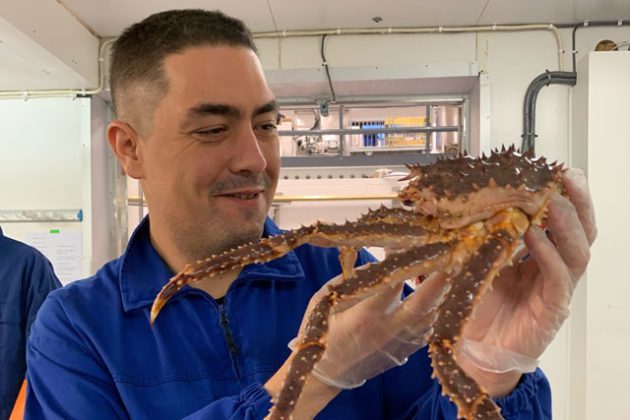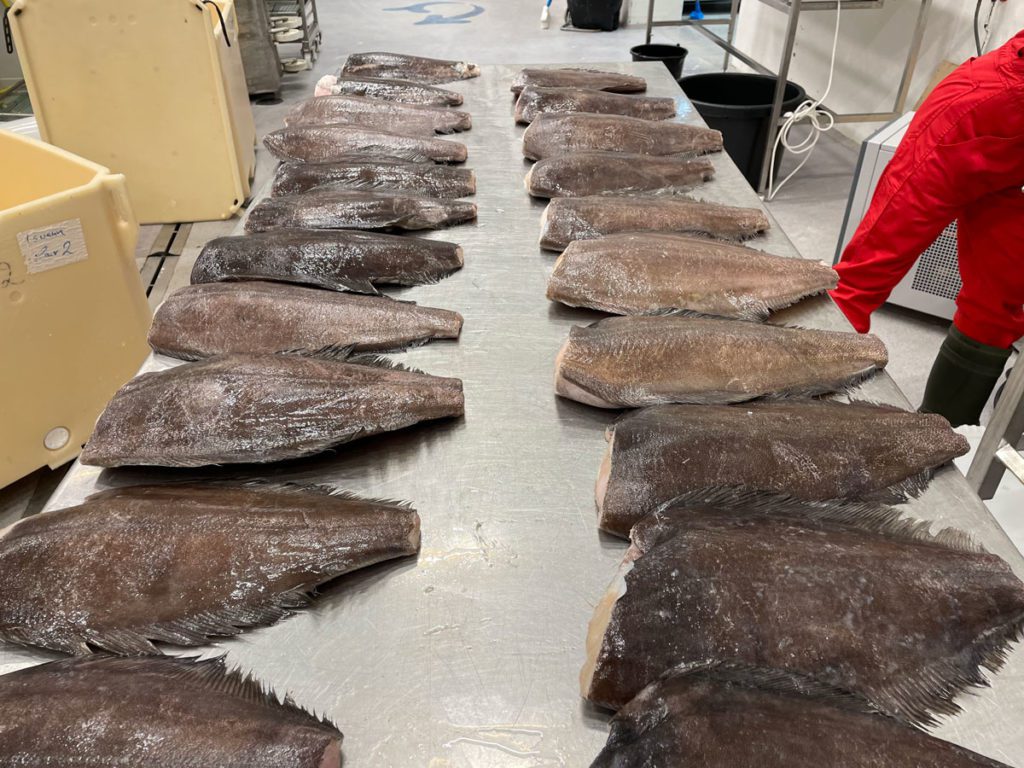Promising results in new areas using hyperspectral light

In his postdoctoral project, Samuel Ortega has achieved better estimates regarding the shelf life of cod, and the possibility of detecting the early stages of a syndrome that produces jelly-like and flaccid muscle in Greenland halibut. All using hyperspectral imaging.
New areas for the quality analysis of seafood using spectroscopy are constantly being uncovered in the Centre for Research-based Innovation (SFI) DigiFoods at Nofima.
“The preliminary results achieved in the DigiFoods project are promising, and suggest an improvement in the shelf life estimation of cod fillets”, says Nofima’s postdoctoral researcher Samuel Ortega, who happily adds:
“For the seafood industry, determining shelf life may lead to a more precise quality grading of the products.”
Ortega defended his PhD at the University of Las Palmas de Gran Canaria in 2021. The PhD project titled ‘Automatic classification of histological hyperspectral images: algorithms and instrumentation’ dealt with the use of hyperspectral imaging for the analysis of medical data. His experience using hyperspectral imaging includes the use of instrumentation, experimental design and data analysis.
The scientist was recently awarded the ‘PhD Extraordinary Award’ in Engineering from his former university. He started as a postdoctoral researcher at Nofima in May, and the results are already looking good.
Less than a day’s margin of error
In accordance with the goals of the Hyperspec sub-project in SFI DigiFoods and in his first year as a postdoctoral researcher at Nofima, Samuel Ortega has been focused on studying new potential ways of using hyperspectral imaging, which may be of great interest to the seafood industry. So far, he has concentrated on estimating the shelf life of cod, and identifying ‘mushy halibut syndrome’ – sometimes called ‘jellyfish’ by fishermen.
When analysing the shelf life of cod fillets, regression models – a quantitative analysis of relationships between a dependent variable and one or more independent variables – are applied to hyperspectral data from both whole fish and fillets of cod. The goal is to be able to estimate shelf life as accurately as possible.
“The reference values regarding shelf life were provided by a sensory panel, which has expertise in the smell, taste and texture of food. The actual analysis takes place using hyperspectral imaging”, explains the scientist.
Previous studies conducted by Nofima suggested a shelf life estimation that had a margin of error of 1.6 days in cod fillets. Using the new method, this has been improved to a margin of error that is less than one day.
The estimate of shelf life in whole fish has not been evaluated before. It can now be done with a margin of error of 1.5 days.
Detecting mushy halibut
Mushy Greenland halibut that has a jelly-like consistency is a challenge for the industry that processes this species of fish. This challenge is also part of Samuel Ortega’s postdoctoral project. He is now working to find out the extent to which hyperspectral imaging can detect Mushy Halibut Syndrome before the fish are processed.
“The Greenland halibut syndrome causes the muscles of the fish to turn jelly-like and flaccid, generally resulting in poor-quality flesh. Seafood producers risk receiving complaints from customers if they deliver fish that have this syndrome. For this reason, it will be attractive for the industry to possess new technologies for early detection of Mushy Halibut Syndrome”, the scientist points out.
So far in the project, more than 60 Greenland halibut – both normal halibut and ‘mushy halibut’ – have been examined using Maritech Eye instrumentation at Nofima.
“Different machine learning algorithms were applied to the spectral data with the goal of identifying Mushy Halibut Syndrome. Preliminary results indicate that early identification of normal halibut and those suffering from this syndrome is possible by utilising the spectral information of the samples”, Samuel Ortega states.
He still has more than two years left of his postdoctoral project, and expects to progress significantly with the two projects he is working on, and also find other new areas where spectroscopic light can be utilised in an industrial context.

Light and tissue
Improving understanding of the interaction between light and tissue is one of the projects.
“Understanding how light interacts with tissue can lead to improvements in the mathematical models that are used to extract the optical properties from the samples, which could potentially show the connection with their chemical composition”, the scientist explains.
Another goal of the Hyperspec project is the combination of magnetic resonance imaging (MRI) with hyperspectral imaging in order to utilise the combination of both technologies.
“We do this to improve modelling and further study the applicability of hyperspectral imaging for food quality assessment”, says Samuel Ortega.


